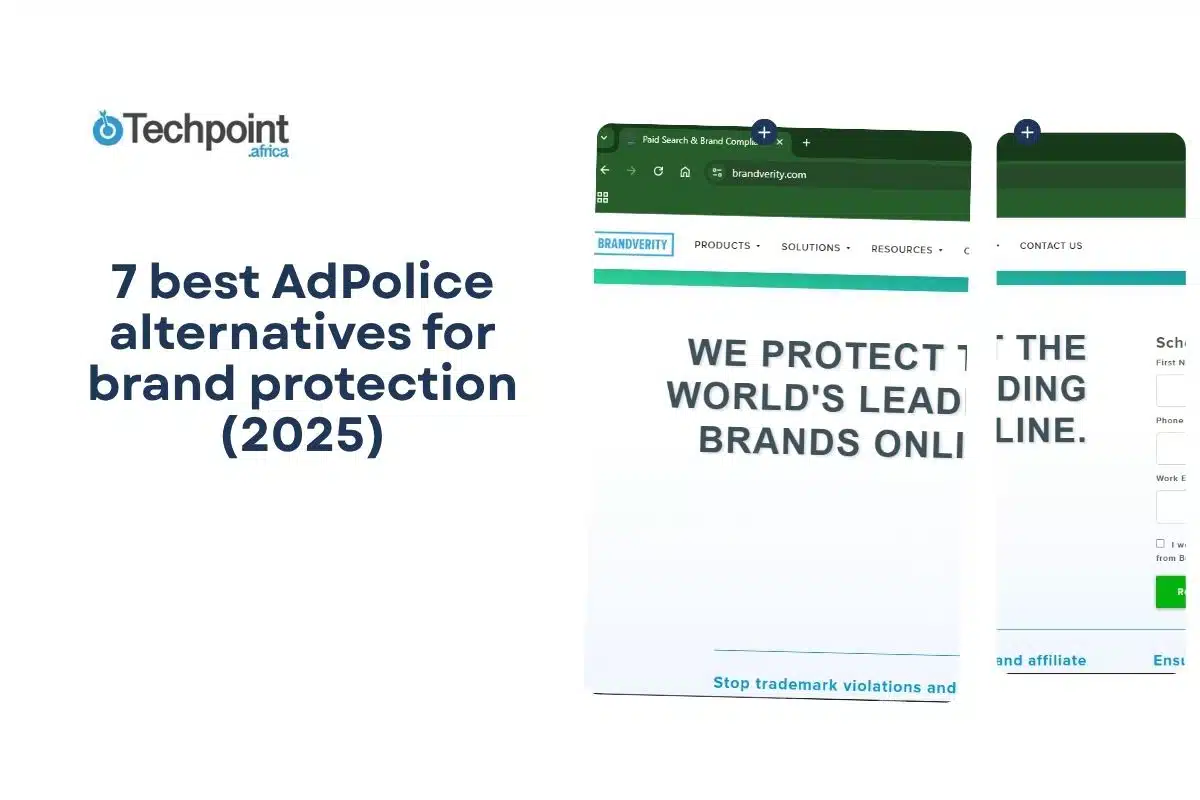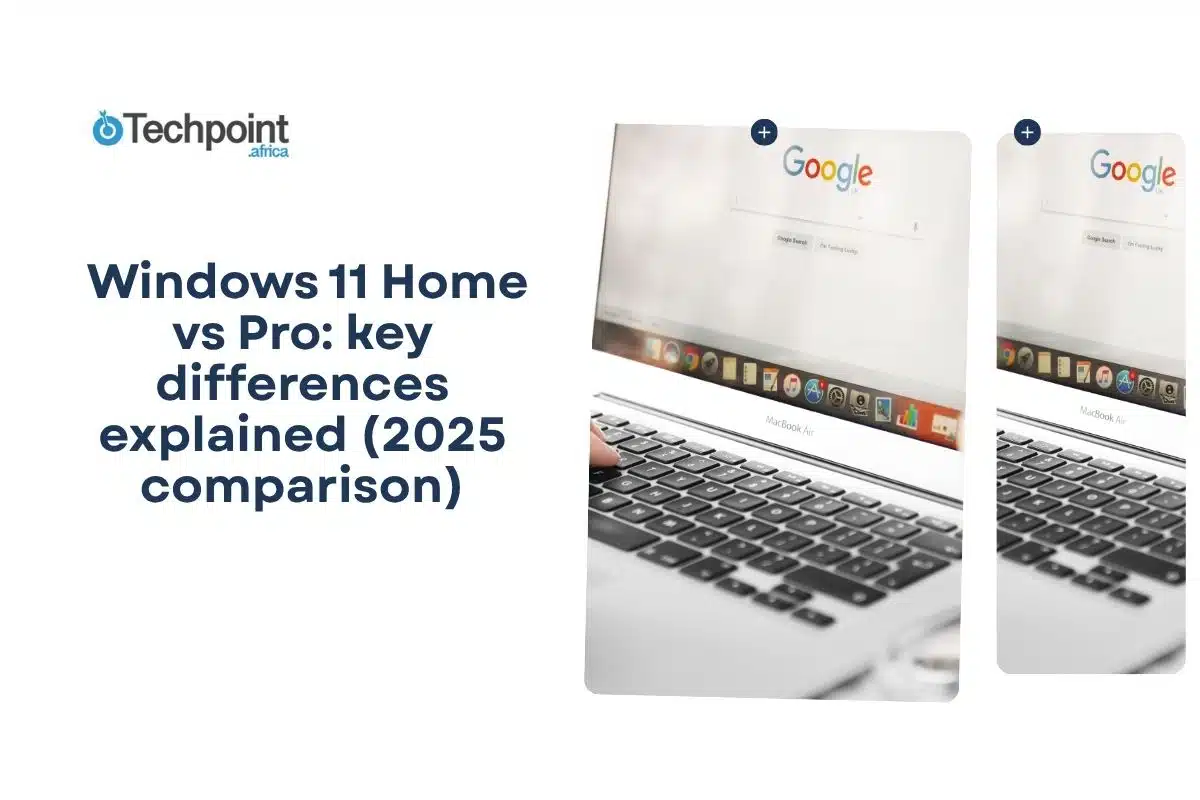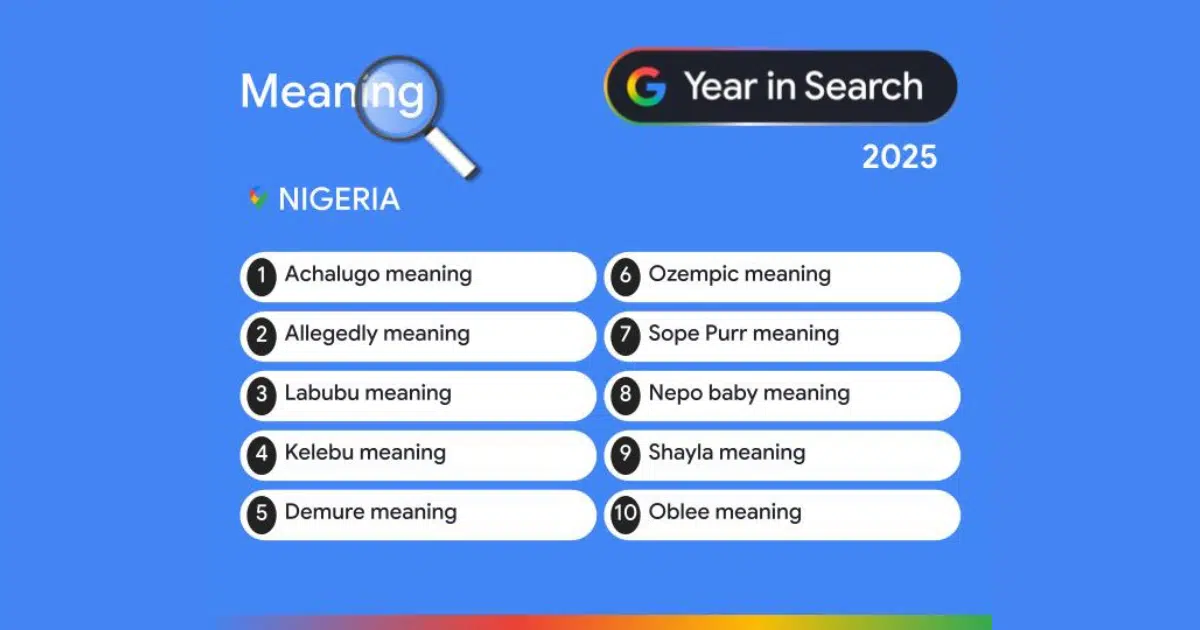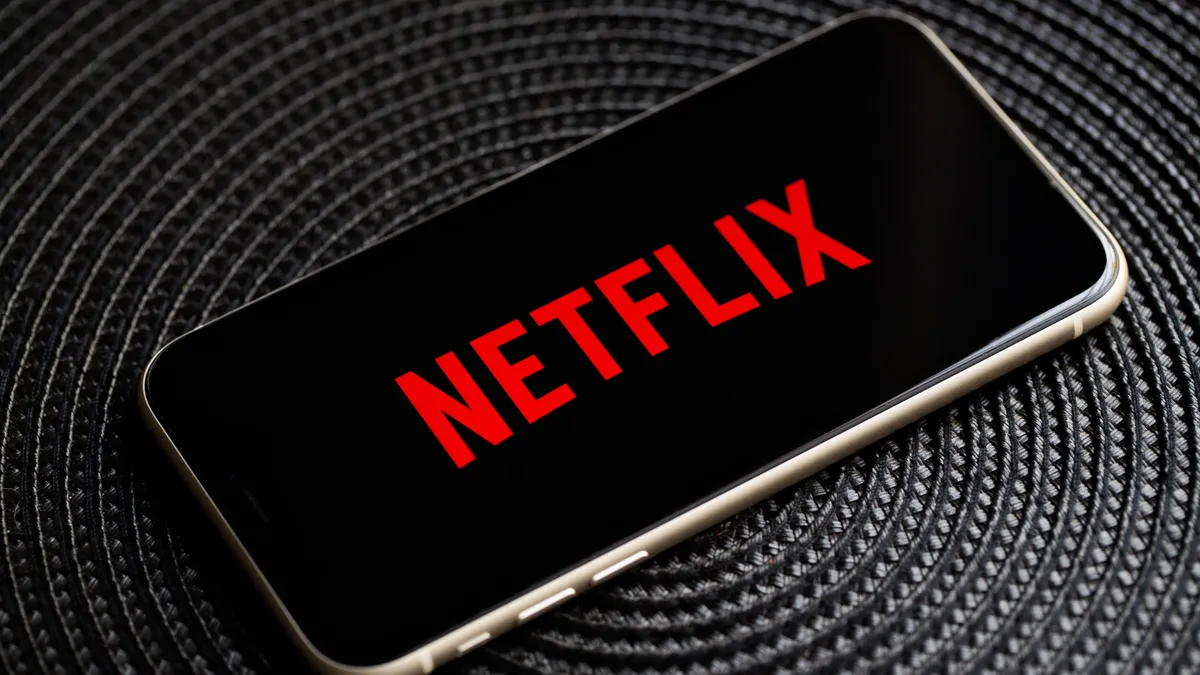If you’ve ever typed Kinox into your browser, you already know that it’s one of those “too good to be true” free streaming sites. Sure, it promises unlimited movies and shows, but the problem is that Kinox is illegal.
Using it means shaky streams, endless sketchy ads, exposure to malware, and, worse, potential copyright trouble. That’s not exactly my idea of a relaxing movie night. I bet it’s not yours either.
The truth is, most free movie streaming sites come with the same problems. They’re either operating in the shadows (illegally hosting copyrighted content) or they’re riddled with shady pop-ups waiting to mess with your device. That’s precisely why I went hunting for legal, safe Kinox alternatives that won’t risk your privacy, security, or bank account.
When you add up Netflix, Disney+, Prime Video, and a live TV subscription, you could be spending $50 or more every single month just to keep up with shows and movies. That’s easily over $600 a year.
Meanwhile, there are actually legal free streaming sites that, while they don’t have the flashiest originals, can still keep you entertained without the cost. Think of them as complementary entertainment. You won’t cancel your Netflix tomorrow, but you might not need three paid services once you try these.
So, I went to work and tested over 20 free streaming platforms to see what’s real. Out of that marathon, I narrowed it down to the eight best legal and safe streaming alternatives to Kinox. No malware. No lawsuits. Just movies, shows, and live channels you can actually watch without sweating.
TLDR: Key takeaways from this article
- Kinox alternatives exist, and they’re legal. Stick to official platforms like Tubi, Plex, and Kanopy.
- You don’t need to pay. These services are free but ad-supported, which means your payment is watching a few commercials.
- Device support is solid. Most legit free platforms have apps for FireStick, Roku, and smart TVs.
- Safety first. Avoid pirate sites like Kinox, as they’re illegal, risky, and often packed with malware.
- VPN optional. Only useful if the service isn’t available in your region, but it doesn’t legalize piracy.
Kinox overview
Before going into legal and safe Kinox alternatives, it’s worth understanding what Kinox actually is. Kinox.to (often shortened to “Kinox”) is a free online streaming website that became popular across Europe for offering instant access to thousands of movies and TV shows, from Hollywood blockbusters to foreign titles.
The problem is that almost all of its content was uploaded illegally, without proper licenses or distribution rights.
At first glance, it looked like the ultimate free Netflix replacement. No signup, no monthly fee, just click and play. But underneath the surface, Kinox was more of a legal landmine than a streaming solution.
The platform offered at its peak:
- A massive library of movies and TV shows, often including very recent releases.
- No registration or subscription required.
- Streaming links pulled from multiple third-party hosts.
- Multilingual content (popular across Germany and beyond).
- Free access, but funded by shady advertising networks.
But Kinox was:
- Completely illegal to use in most countries, which means legal consequences for streaming copyrighted content
- Frequently shut down, with domain changes that made it unreliable.
- Aggressive with ads, pop-ups, and redirects.
- Fertile ground for high risk of malware and phishing attempts.
How it works
Kinox didn’t host its own movies. Instead, it acted more like a directory, pointing users to third-party video links. Once you clicked on a title, you’d be redirected to a different host site where the actual video lived. This setup is why the site kept reappearing under different domains (like kinox.to, kinox.cloud, or kinox.sx) every time authorities tried to shut it down.
The site was primarily financed through aggressive advertising, which often took the form of sketchy banners, intrusive pop-ups, and occasionally even redirect loops. To keep people hooked, it leaned on the promise of unlimited free movies, but “free” came at the expense of security, reliability, and legality.
Why do you need alternatives to Kinox?
Here are the biggest reasons you should ditch Kinox and stick with safe streaming options instead:
1. It’s illegal
Kinox streamed copyrighted movies and shows without licenses. Using it puts you at risk of fines or legal trouble, depending on your country’s laws.
2. Constant shutdowns
Authorities frequently targeted Kinox, which meant the site kept switching domains. One day it worked, the next it was gone, making it totally unreliable for regular streaming.
3. Security risks
Kinox pages were loaded with pop-ups, shady redirects, and suspicious download buttons. Many of these carried malware, Trojans, or phishing scams that could compromise your device.
4. Annoying ads
Free streaming came at the cost of nonstop advertising, the type that hijacks your screen, tries to trick you into clicking, or opens multiple tabs you never intended to open.
5. Poor video quality
Unlike legit platforms, Kinox often relied on low-quality rips. Streams would buffer endlessly, and the latest movies looked like they’d been filmed on a 2005 camcorder.
6. Privacy concerns
Many illegal streaming sites, including Kinox, are known to track user data without consent. Some even embed hidden scripts designed to exploit personal information.
7. No support or stability
Because Kinox operated outside the law, there was no customer service, no guarantees of uptime, and no way to report broken links or fix issues.
8. Better legal alternatives exist
Today, there are plenty of free, legal streaming sites like Tubi and Plex that give you movies without the risk. No malware, no fines, no shady ads.
My testing methodology: How I picked the 8 legal Kinox alternatives
I wanted to find real replacements that anyone could use safely. To do that, I tested over 20 platforms across different devices for two weeks.
During my test, I streamed movies and shows on my desktop, mobile phone, and smart TV. Each platform got at least one full day of testing, enough time to check stability, content variety, and how annoying (or tolerable) the ads were.
My evaluation criteria
- Is it truly free? Some sites advertise “free,” but then lock most content behind a paywall. I only considered platforms with genuinely free streaming options.
- Content library depth: How many movies and shows are available, and are they worth watching? A platform with only a handful of old B-movies didn’t cut.
- Streaming quality: I looked at resolution (SD or better), buffering speed, and whether the streams held up without constant lag or crashes.
- User interface and navigation: A free service shouldn’t feel like a maze. Clean design, simple search tools, and logical categories were a must.
- Ads and pop-up interruptions: I’ll be the first to tell you that free streaming sites rely on ads. I judged how intrusive they were. A few short ads are fine, but constant pop-ups and redirects are deal-breakers.
- Safety: Most importantly, I checked for malware, shady redirects, or forced downloads. Every site that made my final list was tested with antivirus tools to ensure it was safe to use.
The 8 best legal Kinox alternatives
The following are eight solid alternatives to Kinox. Each comes with its strengths and drawbacks.
- Tubi TV.
- Crunchyroll
- Plex.
- Fandango At Home.
- RetroCrush
- The Roku Channel.
- Kanopy.
- YouTube.
1. Tubi TV [Best for movies]
Tubi is a free, ad-supported streaming service with a surprisingly massive catalog of about 275,000 movies and TV show episodes. This includes cult classics like The Matrix and Rush Hour, TV staples like Everybody Hates Chris and Hell’s Kitchen, plus anime favorites like Naruto. It also boasts a growing collection of over 300 Tubi Originals.
It’s the kind of place where you can binge without your wallet taking a hit. What makes Tubi stand out is how premium it feels for a free service. Tubi also has sections for foreign films, Tubi Español, and a Tubi Kids space with parental controls, making it a genuinely family-friendly streaming option.
The platform is available in the United States, Canada, the United Kingdom, Australia, and New Zealand, as well as in several Latin American countries, including Costa Rica, Ecuador, El Salvador, Guatemala, and Panama. You can stream via its website (tubitv.com) or download the app across most smart TVs, consoles, and streaming devices.
How it works
Tubi works like a free version of Netflix. You choose a title, hit play, and watch instantly, with occasional ads to keep the lights on. Ads typically appear every 15–20 minutes and last about two minutes. You don’t even need an account to stream, though creating one lets you build watchlists and sync across devices.
The platform supports services like:
- Amazon Fire TV.
- Apple TV.
- Roku.
- Android devices + Android TV.
- iOS (iPhone, iPad).
- Smart TVs (Samsung, LG, etc.).
- Gaming consoles (Xbox, PlayStation).
- Web browsers.
Tubi at a glance:
| Developer | Fox Corporation |
| Year launched | 2014 |
| Type of tool | Free, ad-supported streaming platform |
| Top 3 use cases | Free movie streaming, Family-friendly streaming, Anime & niche genres |
| Who can use it | Anyone with Internet access in supported regions |
| AI capabilities | Recommendation engine for personalized watchlists |
| Platform accessibility | Web, Mobile apps, Smart TVs, Consoles, Streaming devices |
Key features:
- Concurrent streams: Unlimited.
- Available live TV: Yes, including news, sports, and entertainment channels.
- On-demand movies and TV shows: Over 275,000 titles across multiple genres.
- Original programming: More than 300 Fox originals.
- Anime: Decent anime catalog (e.g., Naruto, Yu-Gi-Oh!).
- Ads: Present, every 15–20 minutes, for as long as 1–2 minutes each.
- Offline downloads on mobile: Not available.
What I liked about Tubi:
- 100% free with no hidden catches.
- Vast library of recognizable and niche titles.
- Live TV section expands beyond movies.
- Polished apps and a user-friendly interface.
- Watchlists and parental control features.
- No registration required to start watching.
What I didn’t like about Tubi:
- Maxes out at 720p video resolution.
- No option for ad-free streaming (unlike Hulu or Peacock).
- No download feature for offline viewing.
- Ads can feel more intrusive compared to other free streamers.
- Limited to certain countries unless you use a VPN.
Ideal users
Tubi is best for budget-conscious streamers who want the Netflix experience without the Netflix bill. If you don’t mind ads and you’re fine with 720p, Tubi gives you a polished, legal way to watch thousands of shows and movies for free, perfect for casual streamers, families, and anime fans.
2. Crunchyroll [Best for current anime]
Crunchyroll is the go-to platform for anime fans who want to keep up with the latest seasonal releases. While its free tier isn’t as generous as it once was, you can still stream popular titles with ads, including a “seasonal sampler” that lets you watch the first three episodes of select new shows without paying a dime. That’s perfect if you’re testing out a series before committing.
The platform has built an empire by absorbing rivals like Funimation and VRV, which means its library is now one of the most comprehensive in the anime world. Beyond anime, Crunchyroll also dabbles in original programming, manga, and even anime-inspired games and merchandise. It has become a cultural hub for anime fans worldwide.
How it works
Crunchyroll operates on both free and premium tiers. Free users can watch a rotating selection of anime titles with ads, while premium subscribers unlock ad-free viewing, full episode libraries, offline downloads, and simulcast access (new episodes available just hours after airing in Japan). It’s available via web browsers, mobile apps, smart TVs, gaming consoles, and streaming devices, making it highly accessible no matter how you watch.
Crunchyroll at a glance:
| Developer | Crunchyroll, LLC (Sony Group subsidiary) |
| Year launched | 2017 |
| Type of tool | Anime streaming platform |
| Top 3 use cases | Watching simulcasts, streaming anime classics, and reading manga |
| Who can use it | Anime enthusiasts, casual streamers, and manga readers |
| AI capabilities | Recommendation algorithms for anime discovery |
| Platform accessibility | Web, Android, iOS, Roku, Apple TV, Fire TV, PlayStation, Xbox, and smart TVs |
| Starting price | $7.99/month |
Key features:
- Concurrent streams: 6.
- Live TV: Not available.
- On-demand movies and TV shows: Yes, anime and some live-action adaptations.
- Original programming: Yes, Crunchyroll Originals.
- Available anime: Massive catalog with thousands of titles.
- Ads: Present on the free plan.
- Offline downloads on mobile: Available for premium users.
What I liked about Crunchyroll:
- Extensive anime library, including Funimation dubs.
- Most simulcast shows are available within hours of release in Japan.
- Offline downloads for premium users.
- Some original programming.
- Integrated manga store and merchandise.
- Free-to-play mobile games.
What I didn’t like about Crunchyroll:
- Interface can feel cluttered at times.
- Limited subtitle customization options.
- The free tier is very restricted compared to competitors.
Ideal users
Crunchyroll is for anime fans who want the latest shows fast and in HD. It’s also great for manga readers and collectors looking for an all-in-one anime hub. While casual viewers may find the ads frustrating, die-hard anime fans won’t find a more comprehensive legal library anywhere else.
3. Plex [Best for streaming local media libraries]
Plex is a free streaming service and a personal media server. Unlike most platforms that only let you stream what they provide, Plex gives you the freedom to upload, organize, and stream your own collection of movies, shows, or music. That flexibility makes it stand out from typical Kinox-like alternatives.
On the free side, Plex now offers a surprising amount of on-demand streaming content. The catalog includes Crackle’s full library of movies and TV shows, plus content from MGM, Warner Bros., and other big-name studios. Genres range from action and comedy to horror and documentaries, giving you plenty of options if you don’t have a personal library to stream.
How it works
Plex works in two ways:
- As a streaming service: Simply install the app or visit the website, and you’ll get instant access to thousands of free ad-supported movies and shows. No signup required.
- As a personal media server: You can set up Plex on a computer or NAS device, upload your own media files, and then stream them across all your devices through the Plex app.
The beauty of Plex is that once your server is up, it organizes your files automatically and lets you stream them on desktop, mobile, or smart TVs, turning your own library into a personal Netflix-like hub.
What makes Plex even better is how it enhances your experience. It automatically enriches your files with posters, plot summaries, cast details, subtitles, and reviews. The result is media that feels less like a pile of random files and more like a polished Netflix-style streaming platform you control.
Plex at a glance
| Developer | Plex, Inc. |
| Year launched | 2009 |
| Type of tool | Media server and free streaming platform |
| Top 3 use cases | Streaming free movies & shows, hosting your own media library, and multi-device playback |
| Who can use it | Anyone who wants free streaming or personal media management |
| AI capabilities | Metadata enrichment (posters, summaries, cast info, subtitles) |
| Platform accessibility | Web, Windows, macOS, iOS, Android, Smart TVs, Roku, Amazon Fire TV, PlayStation, Xbox |
| Starting price | $7/month |
Key features:
- Concurrent streams: Unlimited (for personal server use).
- Available live TV: No.
- On-demand movies and TV shows: Yes, large free catalog.
- Original programming: No.
- Anime: Available in the on-demand library and via personal media servers.
- Ads: Yes, on free content.
- Offline downloads on mobile: Available with paid Plex Pass.
What I liked about Plex:
- A capable free version with no sign-up required.
- Huge library of free on-demand content.
- It can double as a personal Netflix with your own files.
- Intuitive apps on almost every device imaginable.
- Metadata enhancements make your library look professional.
What I didn’t like about Plex:
- Ads can be annoying in free streaming mode.
- Uploading your own media requires some technical setup.
- Limited customization for the interface.
- Some features (like offline downloads) are paywalled.
- Removed extras like podcasts and gaming.
Ideal users
Plex is perfect for people who want more than just streaming. If you already have a large personal media library, Plex will make it shine with automatic organization and cross-device playback. And if you don’t, the free catalog is still worth exploring. It’s not a full Netflix replacement, but it’s close if you combine your own files with Plex’s content.
4. Fandango At Home [Best for on-demand purchases]
Fandango at Home, formerly known as Vudu, is a hybrid streaming service that combines free ad-supported movies with premium on-demand rentals and purchases. Think of it as a mix between a free streaming site and a digital video store; you can either watch free content with minimal ads or pay for blockbuster titles the moment they drop.
The rebranding to Fandango at Home in 2024 streamlined everything under the Fandango umbrella, from cinema tickets to home streaming. With this setup, you can seamlessly buy tickets to see the latest Marvel movie in theaters and then later rent or purchase it on Fandango at Home.
While the free library isn’t massive, the platform makes up for it with quick loading speeds and access to a wide selection of popular films and TV shows. The real win here is flexibility: you can test the waters with free streaming, and upgrade to premium whenever you want something more current.
How it works
Fandango at Home is essentially a digital storefront and free streaming hub. Free content is available to anyone who signs up, though you’ll need to sit through some ads. If you’re after the latest releases, you can rent or purchase them directly within the platform. Playback is smooth and high-quality, with select titles streaming in 4K UHD. On mobile, you can also download movies for offline viewing.
Fandango At Home at a glance:
| Developer | Fandango Media (a division of NBCUniversal) |
| Year launched | 2004 (as Vudu, rebranded in 2024) |
| Type of tool | Streaming platform + digital video store |
| Top 3 use cases | Free ad-supported streaming, on-demand rentals, and buying movies/TV |
| Who can use it | US-based users (VPN needed internationally) |
| AI capabilities | None |
| Platform accessibility | Web, iOS, Android, Smart TVs, Roku, Fire TV, Apple TV |
Key features:
- Concurrent Streams: 3.
- Live TV: No.
- On-demand movies and TV shows: Yes.
- Original programming: Minimal to none.
- Anime: Not a focus.
- Ads: Yes (on free content).
- Offline downloads on mobile: Yes.
What I liked about Fandango At Home:
- Free streaming with minimal ads.
- Lets you rent and purchase movies alongside free options.
- Useful search filters to narrow down titles.
- Offline mobile downloads available.
- Select titles stream in 4K UHD.
- No sign-up required for free content browsing.
- Includes many popular mainstream titles.
What I didn’t like about Fandango At Home:
- Interface feels a bit outdated compared to rivals.
- Virtually no original programming.
- Requires VPN to use outside the US.
- Limited free movie catalog compared to bigger services.
- Fewer new releases in the free library.
Ideal users
Fandango at Home is perfect if you want flexibility: free movies when you’re on a budget and paid rentals or purchases when you want something fresh and high-quality. It’s especially useful for US-based users who want one platform for both free streaming and premium video-on-demand.
5. RetroCrush [Best for retro anime]
RetroCrush is a free anime streaming service built entirely around nostalgia. Instead of chasing the latest shonen titles or blockbuster anime movies, RetroCrush digs into the archives and serves up classics from the ’70s, ’80s, ’90s, and early 2000s. I’m talking the likes of Urusei Yatsura, City Hunter, and Golgo 13.
The platform is totally free, supported by ads, but the good news is you won’t be bombarded with them. The ads are infrequent enough that you can binge-watch without feeling like you’re stuck watching commercials half the time.
Of course, the trade-off is that RetroCrush doesn’t have the newest, most hyped shows. Its library is small and entirely focused on older anime, so if you’re hoping for Attack on Titan or Jujutsu Kaisen, you won’t find them here. But if you want to experience the roots of anime culture, RetroCrush is a hidden gem.
How it works
RetroCrush works like a straightforward, simple streaming service. You don’t even need to create an account to start watching. Just visit the site or download the app, hit play, and you’re in.
You can either watch on-demand from its curated library or check out its 24/7 “live” anime channel that streams titles continuously like old-school TV. The service is free across all platforms, though a premium tier with some perks exists.
| Developer | Digital Media Rights (DMR) |
| Year launched | 2020 |
| Type of tool | Free anime streaming platform |
| Top 3 use cases | Watching classic anime, casual binge sessions, and nostalgia rewatching |
| Who can use it | Anime fans, casual viewers, retro media enthusiasts |
| AI capabilities | None |
| Platform accessibility | Web, iOS, Android, Roku, Fire TV, Apple TV |
| Starting price | $4.99/month |
Key features:
- Concurrent streams: Unlimited.
- Live TV: 24/7 anime channel available.
- On-demand movies and TV shows: Yes, but limited to retro titles.
- Original programming: None.
- Anime: 100% of the library.
- Ads: Yes, but minimal.
- Offline Downloads on Mobile: Not available.
What I liked about RetroCrush:
- Excellent free tier with no paywall for classics.
- Exclusive retro anime titles you can’t easily find elsewhere.
- 24/7 live feed for a “TV channel” feel.
- Minimal ads compared to other free streaming sites.
What I didn’t like about RetroCrush:
- Small library, even if you upgrade to premium.
- No modern anime releases.
- No offline downloads or strong community features.
Ideal users
RetroCrush is perfect for fans who see classic anime as its own genre. If names like Lupin the 3rd or Urusei Yatsura excite you more than the latest Demon Slayer arc, you’ll love this. It’s basically a curated nostalgia trip for anime lovers who value heritage over hype.
6. The Roku Channel [Best for Roku users]
The Roku Channel is a Roku-owned ad-supported streaming platform, serving up thousands of free movies, TV shows, and live channels. Launched as an extension of Roku’s hardware ecosystem, it quickly became a standalone content hub that anyone, whether or not they own a Roku device, can enjoy.
Its offerings span over 80,000 movies and shows, plus 500+ live channels across sports, news, and entertainment.
What makes The Roku Channel stand out is its balance of free content and optional paid add-ons. It also integrates seamlessly with Roku devices, doubling as both a content platform and a media hub. The channel’s high-resolution streaming, bookmark features, and exclusive Roku Originals make it a solid alternative for Kinox fans who want something legal and easy to use.
How it works
The Roku Channel operates as a free, ad-supported video-on-demand (AVOD) and live TV service. Users can stream instantly on Roku devices, the web, or mobile apps without even signing up. For those seeking more, Roku lets you subscribe to premium channels and add them to your streaming experience. Ads support the free content, but premium content comes ad-free. On mobile, the app doubles as a Roku remote, adding extra convenience.
| Developer | Roku, Inc. |
| Year launched | 2017 |
| Type of tool | Ad-supported streaming platform |
| Top 3 use cases | Free streaming, live TV access, premium channel subscriptions |
| Who can use it | Anyone with a Roku device, web browser, or mobile app |
| AI capabilities | Basic recommendations and search |
| Platform accessibility | Roku devices, web browsers, Android/iOS apps |
Key features:
- Concurrent streams: Unlimited.
- Live TV: Yes (500+ channels).
- On-demand movies and TV shows: Yes.
- Original programming: Yes, Roku Originals.
- Anime: Limited availability.
- Ads: Yes, in free content.
- Offline downloads on mobile: Not available.
What I liked about The Roku Channel:
- Completely free to access content without sign-up.
- Large collection of movies, shows, and live TV channels.
- Roku Originals bring exclusive programming.
- Premium channels are available as add-ons.
- Mobile app doubles as a Roku TV remote.
- High-quality video streaming with a simple interface.
What I didn’t like about The Roku Channel:
- The content library feels unorganized, making discovery harder.
- No offline downloads for mobile viewing.
- Limited control over video quality.
- Premium subscriptions are device-restricted in some regions.
- You’ll likely need a VPN outside supported countries.
- Fewer movies compared to other free sites.
Ideal users
The Roku Channel is a natural fit for existing Roku users, but it’s also a solid option for anyone hunting for free, legal streaming alternatives. It’s especially great if you want live TV without cable, free movies without sketchy sites, or if you’re curious about exclusive Roku Originals. Fans of short-lived Quibi shows will also find a home here, since Roku scooped up its entire catalog.
7. Kanopy [Best for educational and family-friendly content]
Kanopy is a streaming service that focuses on thoughtful, educational, and family-friendly entertainment. Unlike commercial streaming platforms that rely on ads or monthly subscriptions, Kanopy works through partnerships with public libraries and universities. If you have a valid library card or university login, you can unlock its vast library without paying anything.
The platform is widely respected for its curated selection of documentaries, indie films, classics, and children’s programming under Kanopy Kids. It’s not about the latest blockbuster but about quality, meaningful, and often hard-to-find titles. From films distributed by A24 to educational documentaries from PBS, Kanopy fills the niche for people who want both entertainment and learning without distractions from ads.
Best of all, Kanopy supports an unlimited number of simultaneous streams per account, making it perfect for families, students, or even small groups who want to watch on different devices at the same time. The only major catch is that you’ll need access through a participating library or institution.
How it works
Kanopy partners with public libraries and universities to provide free access to their catalog. Users simply sign up with their library card number or university email. Once authenticated, you can immediately stream films and shows across devices.
The service uses a “play credit” system. Depending on your library, you may be limited to a set number of premium films per month (typically 5–10). However, Kanopy Kids content and select materials don’t count toward these credits. You can stream on web browsers, mobile apps, smart TVs, and streaming devices.
| Feature | Details |
| Developer | Kanopy, LLC |
| Year launched | 2008 |
| Type of tool | Streaming service (educational & entertainment) |
| Top 3 use cases | Watching documentaries, educational streaming for students, and Family-friendly programming |
| Who can use it | Library cardholders, University students/faculty, Families |
| AI capabilities | None |
| Platform accessibility | Web, iOS, Android, Fire TV, Roku, Apple TV, Chromecast |
Key features
- Concurrent Streams: Unlimited.
- Live TV: Not available.
- On-demand Movies and TV shows: Available.
- Original programming: Not available.
- Anime: Not available.
- Ads: No ads.
- Offline downloads on mobile: Not available.
What I liked about the tool
- Thousands of on-demand films and shows.
- Completely free with library or university access.
- No ads interrupting the viewing experience.
- Unlimited access to Kanopy Kids content.
- Ability to create and share/embed clips and playlists.
- No limit on simultaneous streaming.
What I didn’t like about the tool
- Limited “play credit” titles per month.
- No offline downloads on mobile devices.
Ideal users
Kanopy is best for students, researchers, educators, families, and anyone who enjoys high-quality films and documentaries. With content from A24, HBO Documentary Films, Paramount, PBS, and more, it’s a treasure trove for thoughtful viewers. Parents will especially appreciate Kanopy Kids, which offers a safe, ad-free environment for children.
8. YouTube [Best for streaming all-purpose content]
YouTube isn’t just for cat videos and music covers; it’s also one of the largest free movie streaming platforms available. Beyond user-generated content, YouTube has an entire library of movies and TV shows you can watch legally at no cost.
The best part is that no subscription is required. Whether you’re in the US, UK, France, Nigeria, or other supported regions, you can access a wide range of titles across genres like Romance, Horror, Documentary, Animation, Western, and Family.
Because it’s ad-supported, you don’t pay a dime, but you’ll have to sit through occasional ads. The upside is that the platform is accessible everywhere, streams quickly, and works on almost every device imaginable. YouTube also allows account holders to download some free titles on mobile for offline viewing, which is a huge plus compared to many free platforms.
How it works
YouTube operates as a free-to-watch, ad-supported video streaming service. You can simply visit YouTube.com or the YouTube app, search for “Free Movies,” and find a rotating library of titles offered. No account is required to stream, but having one allows you to save movies to playlists, sync content across devices, and download eligible content for offline viewing on mobile devices.
YouTube at a glance
| Developer | Google LLC |
| Year launched | 2005 |
| Type of tool | Video-sharing and streaming platform |
| Top 3 use cases | Streaming free movies, watching premium rentals/purchases, and accessing user-generated content |
| Who can use it | Anyone with Internet access |
| AI capabilities | Content recommendation algorithms, automated captions, and video search |
| Platform accessibility | Web, iOS, Android, Smart TVs, Roku, Fire TV, Apple TV, game consoles |
| Starting price | $13.99/month |
Key features:
- Concurrent streams: Unlimited.
- Live TV: Not included (YouTube TV is separate, paid).
- On-demand movies and TV shows: Available.
- Original programming: Limited (YouTube Originals, now scaled back).
- Anime: Available (via user uploads or licensed content).
- Ads: Yes, ad-supported.
- Offline downloads on mobile: Available for some free content.
What I liked about YouTube:
- Massive collection of free, ad-supported movies across multiple genres.
- Works on virtually every device with an Internet connection.
- No account required to watch..
- Some titles are available for offline viewing on mobile.
- High-quality streaming speeds.
What I didn’t like about YouTube:
- Ads can be frequent and disruptive.
- Free movie library rotates often (you might lose access to favorites).
- Hard to separate licensed free content from user uploads sometimes.
- Premium titles cost extra (rent or buy).
Ideal users
YouTube is perfect for casual streamers who don’t want another paid subscription. It’s especially handy if you’re looking for mainstream titles or classics across different genres without breaking the bank. Families, students, and anyone who already uses YouTube daily for other content will find it a convenient and versatile option.
Legal vs. illegal streaming: What you need to know
Sites like Kinox sit in a legal gray zone, and using them isn’t just risky for your device; it could land you in trouble, too.
Why it’s a problem.
Illegal streaming platforms don’t pay for distribution rights. That means when you hit play on that new blockbuster, you might be breaking copyright laws without even realizing it. Depending on where you live, the consequences can range from a slap-on-the-wrist ISP warning to hefty fines or even lawsuits.
Risks of using illegal sites
- Fines and penalties: Many countries issue fines for streaming copyrighted material.
- ISP warnings: Your Internet Service Provider can throttle or block your connection.
- Malware and phishing: Shady streaming sites are breeding grounds for pop-ups, scams, and data theft.
How to spot legal platforms
To make sure you’re not breaking any copyright law, look for clear signs of legitimacy:
- Licensing: Legal platforms always have proper streaming rights.
- App store presence: If you can download it from the Apple App Store or Google Play, it’s usually safe.
- Known partnerships: Platforms like Kanopy partner with libraries and universities; others work directly with Hollywood studios.
Regional availability matters
Even legal platforms, like the ones in the list above, often limit content to specific countries. In simple terms, that means they’re only available in certain regions. For example, Tubi may work flawlessly in the US but won’t open in Europe or Africa. That’s a licensing issue, not a scam.
Where VPNs fit in
A VPN (Virtual Private Network) can help you access geo-restricted legal services by changing your virtual location. But let me be clear here: a VPN won’t magically make illegal streaming legal. It just helps you unlock legitimate services that are otherwise region-blocked.
Once you set it up and connect to a server, the VPN masks your real IP address and replaces it with one from the country you’ve selected. That way, you can appear as though you’re streaming from the US (or whichever country the service is available in), bypassing location blocks.
As a bonus, it also shields your browsing activity, making it harder for anyone to track what you do online. While premium VPNs usually deliver the fastest and most reliable streaming experience, you don’t always need to spend money right away. Some solid free VPN options include:
- ProtonVPN: Known for security and no data caps on the free plan.
- Windscribe: Offers 10GB monthly data with multiple server locations.
- TunnelBear: Super beginner-friendly with a fun design, though limited data.
- Hide.me: Good speeds and a decent free tier for casual streaming.
If you’re serious about streaming, though, a paid VPN is usually worth it for the faster speeds, unlimited data, and better reliability.
Best practices for free streaming
- Stick to verified, legal platforms: Start with the ones in this article. If it’s available in the App Store, Google Play, or through official partnerships (like libraries or universities), you’re on safe ground.
- Watch out for too-good-to-be-true sites: If a platform is serving you the latest cinema releases for free, chances are it’s operating illegally.
- Use a VPN responsibly: VPNs are great for unlocking geo-restricted legal services, but remember, they don’t turn piracy into legality.
- Protect your devices: Always use an antivirus and an ad blocker when streaming online. Even some legit free platforms have aggressive ads.
- Check content rights: Legitimate services usually highlight their partnerships (e.g., Paramount, A24, PBS). If there’s no mention of licensing, be skeptical.
- Mind your data: Don’t hand out personal details or credit card info to suspicious “free” sites. Legal free platforms typically don’t ask for that.
- Know your limits: Free streaming is amazing, but it often comes with trade-offs like ads, content caps, or geo-restrictions. If you need more, upgrading to a paid plan might save you time and stress.
The future of free streaming: Key insights and trends
1. The rise of legal free streaming sites supported by ads
Free streaming is no longer synonymous with shady pirate sites. Platforms like Tubi are proving that ad-supported models can deliver a wide range of movies and shows at zero cost. For users, it’s a win-win: free content without the legal risks.
2. Platforms are investing more in regional libraries and local content
Global players are realizing that audiences want stories they can relate to. That’s why you’ll find more region-specific films and series being added to free streaming platforms, tailored to local cultures and languages. It’s no longer just about Hollywood blockbusters.
3. Mobile-first streaming is growing fastest
With more people streaming on the go, platforms are prioritizing mobile accessibility and lightweight apps. Features like offline downloads, better compression for slower internet, and optimized mobile experiences are becoming must-haves for free streamers.
4. Paid + free hybrid models are overtaking shady pirate sites
The future isn’t purely free or paid, it’s a mix. Many services now offer both tiers — a free ad-supported option and a premium ad-free plan with extras. This hybrid approach is steadily drawing viewers away from gray-area sites like Kinox, offering both safety and choice.
Common limitations of free video streaming
Free streaming services are a lifesaver, but they’re not without compromises.
Here are the biggest trade-offs you should expect:
1. Lower video quality
Don’t count on getting crisp, cinema-level visuals. Only a few free services, like Crunchyroll and Kanopy, offer 1080p streaming. Most others cap at 720p or lower.
For instance, many popular titles on Tubi stream around 540p, which can feel like a throwback to early YouTube. Still, it’s worth noting that even Netflix’s base plan limits resolution to SD, so in some cases, free platforms can be a step up.
2. Missing premium features
Expect to forgo things like DVR recording, storage, and advanced audio/video options. Services like Apple TV+ deliver Dolby-quality sound, but free platforms rarely compete at that level.
3. No offline downloads (for most platforms)
Offline viewing is a luxury in the free world. Paid tiers on some anime platforms offer it, and Plex Pass lets you sync media offline if you already own it. But for most free services, you’ll need an internet connection every time you hit play.
4. Viewing limits
Unlike other services that let you binge endlessly, Kanopy and other free platforms cap how many titles you can watch per month.
Conclusion
After exploring all eight Kinox alternatives, one thing became clear to me: you don’t actually need to risk shady, unreliable pirate sites to enjoy free movies and shows. The legit options might not give you every single feature like 4K, unlimited downloads, or shiny originals, but they offer something far more important: peace of mind.
Whether you’re into anime, documentaries, or just want a lazy Saturday movie marathon, there’s a safe, free platform for you. Pair it with a VPN if you’re outside the supported regions, and you’ve got a reliable setup that doesn’t involve worrying about fines, malware, or ISP warnings.
So, if you’ve been hanging onto Kinox (or sites like it) out of habit, maybe it’s time to let go. The streaming world has matured, and honestly, it feels good to watch without looking over your shoulder.
FAQs about Kinox alternatives for free streaming
1. Is it legal to use Kinox alternatives?
Yes, but only if you stick to the official platforms. The services I’ve listed in this article (like Tubi and Kanopy) are licensed, ad-supported, and perfectly legal.
2. Are free movie streaming sites safe?
If you stick to official sites, yes. They’re backed by media companies, available in app stores, and free of shady pop-ups. But pirate sites like Kinox are risky.
3. Do I need a VPN for these platforms?
Not always. If you’re in a supported region (like the US for Tubi), you can stream without a VPN. But if you live in a country where the platform isn’t available, a VPN can help you access it. Just remember that a VPN can’t make illegal streaming legal.
4. Are there completely free legal options?
Yes. Many platforms like YouTube and Tubi are completely free to use. They’re funded by ads, so you won’t pay with your wallet, but you will pay with your attention to commercials.
5. What can you stream for free?
You’ll find two main types of content: on-demand movies and shows and live TV channels (e.g., Pluto TV, Xumo). Some platforms even offer both.
6. Which alternative has the biggest movie library?
Tubi currently has one of the largest free streaming libraries, with hundreds of thousands of titles across movies, TV shows, and documentaries.
7. Can I access these sites on FireStick or smart TVs?
Yes. Most free streaming services work in a browser, and many (like Tubi) also have official apps for FireStick, Roku, Apple TV, and smart TVs.
8. Can legitimate free streaming sites still face copyright issues?
Yes, occasionally. For example, Tubi has faced lawsuits claiming it streamed content without proper licenses, though the company denies this. These cases are rare but could impact how the free streaming industry evolves.
9. Is free video streaming actually free?
Mostly. You don’t pay money, but you’ll pay with attention. Some services (like Plex) are lighter on ads, while others, like Tubi, show them more regularly. Kanopy is the exception: it’s ad-free, but caps how many titles you can watch each month.
Disclaimer!
This publication, review, or article (“Content”) is based on our independent evaluation and is subjective, reflecting our opinions, which may differ from others’ perspectives or experiences. We do not guarantee the accuracy or completeness of the Content and disclaim responsibility for any errors or omissions it may contain.
The information provided is not investment advice and should not be treated as such, as products or services may change after publication. By engaging with our Content, you acknowledge its subjective nature and agree not to hold us liable for any losses or damages arising from your reliance on the information provided.
Always conduct your research and consult professionals where necessary.











